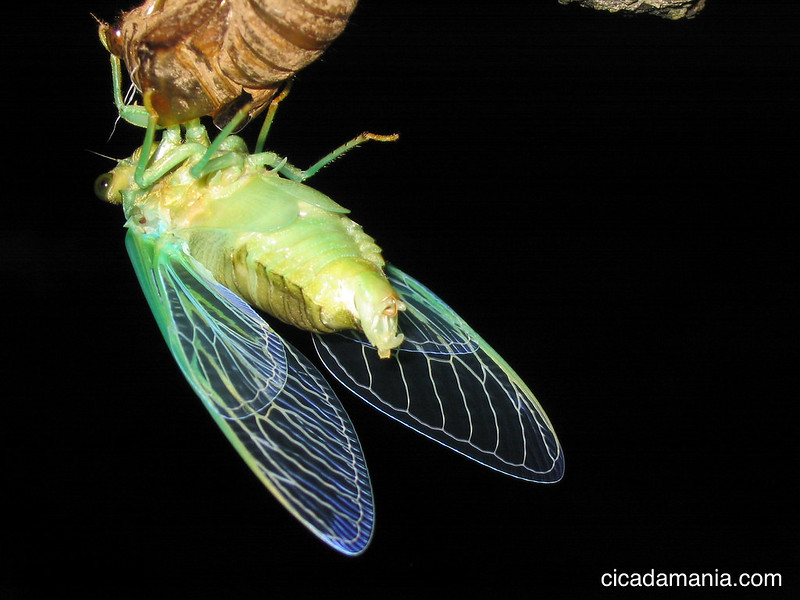The first time I saw the Genus and species name for this cicada, it was called a Tibicen chloromera:

Then its name changed to Tibicen chloromerus, so the gender of the Genus and species name would be in agreement (or so I believe).
Now, this cicada is simply Tibicen tibicen. To read more about why, you’ll need to read Entomological News, Volume 119 Issue 3, “The Identity Of Cicada tibicen Linné [=Tibicen chloromerus (Walker, 1850)] (Hemiptera: Cicadoidea: Cicadidae) no access”.
Here is the abstract:
A lectotype is designated for Cicada tibicen Linné, 1758. The Linnaean specimen located in the Zoological Museum of Uppsala University can be traced to Linné and the original species description. The species is determined to be the same as what is currently recognized as Tibicen chloromerus (Walker, 1850), making T. chloromerus and Cicada sayi Smith and Grossbeck, 1907, junior synonyms of Tibicen tibicen (L.).
Of course you can call it Swamp Cicada, Morning Cicada, or Green Annual Cicada (from Bug Guide). It doesn’t care.

Now do I update all instances of “Tibicen chloromera” on this site, or not. Hmmm….
3 replies on “Tibicen tibicen”
Hi Dan and Elias,
As a lecturer in micro and parasitology, it is not uncommon to have nomenclature changed so that successive generations of researchers/professionals are totally confused and can’t talk to one another about the same species!! It’s the interesting nexus between morphotaxonomy, molecular and song taxonomy- the questions still remins as to what defines a species? How many phenotypic or genotypic base changes constitute a new species or will it still be production of fertile offspring?
I am totally unhappy with this confusing name. I have maintained Tibicen chloromera for all my labels – and I just captured about 50 specimens this summer! I hope this can somehow be reversed, it causes so many problems especially with data base searches etc.
Damn- have to change the labels again!!
Shows the power of predecent Dan- the legal bods have it all over us!! It’s just hard actually tracing the lineage, esp if the data is incorrect or incorrectly quoted. There was a long discussion thread on Insectnet regarding the accuracy of location/collection data, which all helps.
David.